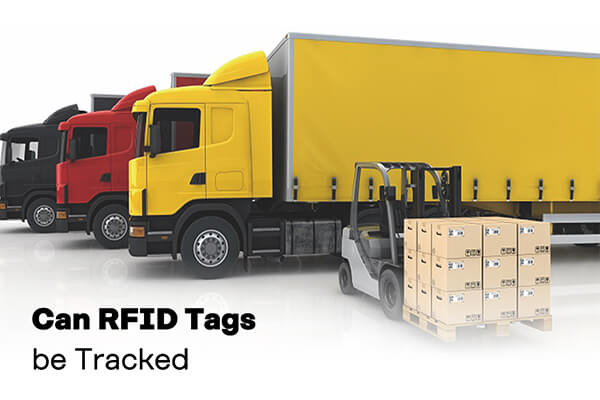RFID tags use radio frequency technology to track and identify items. These radio waves transmit data from the tag to a reader which then transmits the information to an RFID computer program. RFID tags are also known as RFID chips. These tags work by transmitting and receiving information through a microchip or IC and an antenna. RFID tags are either passive or battery-operated. Passive RFID tags work by using electromagnetic energy transmitted from an RFID reader whereas active or battery-operated RFID tags contain an onboard battery as a power supply. Therefore, can one track an RFID tag?
Businesses that rely on the availability of their high-value assets to generate revenue use RFID tags for asset tracking and effective inventory management. These tags are efficient and cost-effective. Their ability to automate tracking and monitoring processes puts an end to error-prone methods of excel spreadsheets. Data is stored on an RFID tag with a unique Electronic Product Code (EPC) and is attached to an asset. Using RFID tags to track assets increases asset visibility, improves customer experience, maximizes workplace efficiency, and provides a good ROI.
However, these RFID tags can be tracked within a certain distance. Active RFID tags are commonly used to track assets in real-time such as vehicle tolling and tracking. These tags have a signal range of up to 150 meters, depending on the tag’s frequency. Passive RFID tags are commonly used for access control, tracking inventory, and supply chain management. These tags have different levels of frequency and can track at different distances. Low frequency (LF) RFID tags have a signal range up to 10 cm. They operate at a frequency range between 125-134 kHz. High frequency (HF) RFID tags operate at a frequency of 13.56 MHz and their signal range is up to 1 meter. Ultra-high frequency (UHF) RFID tags operate at a frequency of 860-960 MHz. They offer a great read range of up to 150 meters.
For an RFID tag to work, several RFID equipments are needed. These include; an RFID reader, an antenna, and RFID software. RFID readers collect data from tags. Readers are different depending on what you’re trying to track, where you’re trying to track it, the materials around it, and the information you want to know about it. RFID readers can either be mobile or fixed. Mobile readers are handheld, and you scan individual items on the go while fixed readers are mounted in specific locations and are used to track items as they move from one place to another. Readers and tags have antennas that allow them to communicate with each other. The size of the tag’s antenna and the shape of the reader’s antenna determines the read range. RFID system antennas are; linear and circular. RFID software provides the link to help one make the information collected by the tag and reader meaningful and actionable. The software involved is; firmware, middleware, and application.
Firmware resides on the RFID hardware itself and it is responsible for running the device. Middleware is between firmware and the application and it gathers the raw RFID data and serves as a vehicle for sharing this data with the application software. Application software makes use of your RFID-collected data to address a particular business need.
Nexqo is a professional RFID hardware provider with more than 10 years of experience in the RFID industry. Click here to learn how the RFID tag works.
You can also click here to learn more about the products that you can use in your project. If you are not sure, welcome to contact our sales experts any time.
